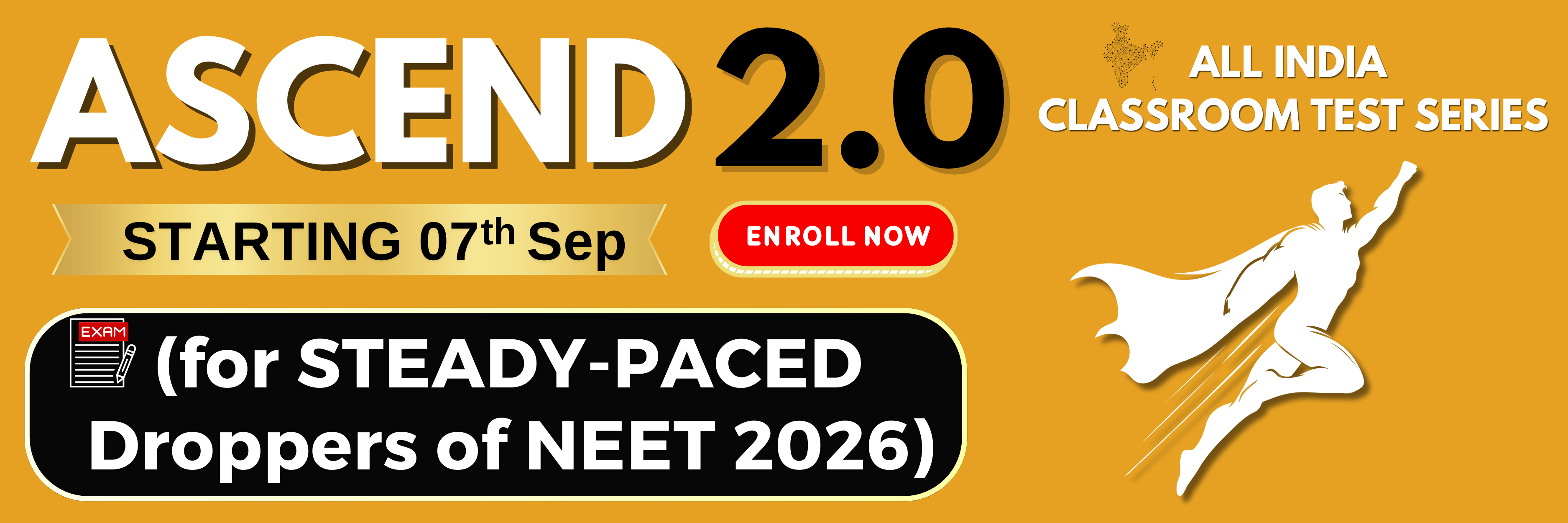Roots arising from the parts of a plant other than radical are called as:
| 1. | Tap root | 2. | Fibrous roots |
| 3. | Adventitious roots | 4. | Lateral roots |

To unlock all the explanations of 38 chapters you need to be enrolled in MasterClass Course.

To unlock all the explanations of 38 chapters you need to be enrolled in MasterClass Course.
Root hairs at the root tip are formed by:
| 1. | Epidermal cells in the region of maturation |
| 2. | Cortical cells in the region of elongation |
| 3. | Epidermal cells in the region of elongation |
| 4. | Cortical cells in the region of maturation |

To unlock all the explanations of 38 chapters you need to be enrolled in MasterClass Course.

To unlock all the explanations of 38 chapters you need to be enrolled in MasterClass Course.
At the root tip, the cells that are responsible for the growth of the root in length are located in the region that is:
1. distal to the region of meristematic activity
2. proximal to the region of meristematic activity
3. proximal to the region of maturation
4. distal to the region of elongation

To unlock all the explanations of 38 chapters you need to be enrolled in MasterClass Course.

To unlock all the explanations of 38 chapters you need to be enrolled in MasterClass Course.
What is not true for a stem in a flowering plant in general?
| 1. | Negatively geotropic |
| 2. | Develops from plumule of the germinating embryo |
| 3. | Absence of terminal and axillary buds |
| 4. | Spreads out branches bearing leaves, flowers and fruits |

To unlock all the explanations of 38 chapters you need to be enrolled in MasterClass Course.

To unlock all the explanations of 38 chapters you need to be enrolled in MasterClass Course.
| I: | develop at the node, bear buds in their axil that later develop into a branches. |
| II: | originate from shoot apical meristems and are arranged in an acropetal order. |
1. Only I is correct
2. Only II is correct
3. Both I and II are correct
4. Both I and II are incorrect

To unlock all the explanations of 38 chapters you need to be enrolled in MasterClass Course.

To unlock all the explanations of 38 chapters you need to be enrolled in MasterClass Course.
A bud is present in the axil of:
| I: | petiole in simple leaves |
| II: | petiole in compound leaves |
| III: | leaflets of the compound leaves |
| 1. Only I and II | 2. Only I and III |
| 3. Only II and III | 4. I, II and III |

To unlock all the explanations of 38 chapters you need to be enrolled in MasterClass Course.

To unlock all the explanations of 38 chapters you need to be enrolled in MasterClass Course.
A parallel venation will be seen in the leaves of all the following plants except:
| 1. | Wheat | 2. | Rice |
| 3. | Pea | 4. | Maize |

To unlock all the explanations of 38 chapters you need to be enrolled in MasterClass Course.

To unlock all the explanations of 38 chapters you need to be enrolled in MasterClass Course.
| 1. | Stipules | Small leaf like structure, generally two in number, that are sometimes present at the leaf base |
| 2. | Pulvinus | Leaf base in monocotyledons expanded into a sheath covering the stem partially or wholly |
| 3. | Petiole | A stalk that connects the blade with the leaf base |
| 4. | Leaf blade | Also called as lamina and is the green expanded part of the leaf with veins and veinlets |

To unlock all the explanations of 38 chapters you need to be enrolled in MasterClass Course.

To unlock all the explanations of 38 chapters you need to be enrolled in MasterClass Course.
| Column I | Column II | ||
| A. | Simple leaf | P. | Lamina is entire or when incised, the incisions do not touch the midribs |
| B. | Pinnately compound leaf | Q. | The leaflets are attached at a common point, i.e., at the tip of petiole |
| C. | Palmately compound leaf | R. | A number of leaflets are present on a common axis, the rachis |
Codes:
| A | B | C | |
| 1. | P | Q | R |
| 2. | P | R | Q |
| 3. | R | Q | P |
| 4. | Q | P | R |

To unlock all the explanations of 38 chapters you need to be enrolled in MasterClass Course.

To unlock all the explanations of 38 chapters you need to be enrolled in MasterClass Course.
| Column I [Phyllotaxy] |
Column II [Example] |
||
| A. | Alternate | P. | Alstonia |
| B. | Opposite | Q. | Calotropis and Guava |
| C. | Whorled | R. | China rose, Mustard and Sunflower |
| A | B | C | |
| 1. | P | Q | R |
| 2. | P | R | Q |
| 3. | R | Q | P |
| 4. | Q | P | R |

To unlock all the explanations of 38 chapters you need to be enrolled in MasterClass Course.

To unlock all the explanations of 38 chapters you need to be enrolled in MasterClass Course.






